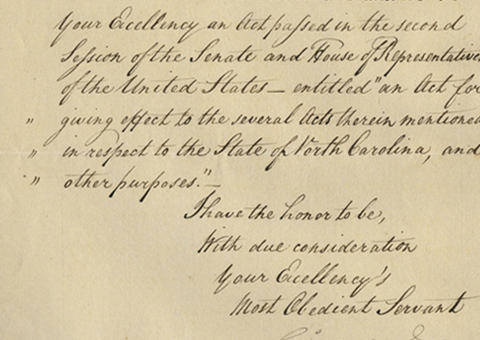A Bottle of Wine From the Cellar of a Founding Father, the First Man Who Held the Title President of the United States



Acquired from the direct descendants of John Hanson, giving a continuous provenance to date.
It still has a small piece of his red seal attached
The history of wine in America is irrevocably tied to the history of port and other fortified wines, which are created by adding harder liquor to red wine. Portugal and the island of Madeira, leading makers of these wines, served as...
It still has a small piece of his red seal attached
The history of wine in America is irrevocably tied to the history of port and other fortified wines, which are created by adding harder liquor to red wine. Portugal and the island of Madeira, leading makers of these wines, served as well-known ports for various shipping routes going to and from the New World. Prior to the Revolution, England had specific legislation in place that prevented the export of wine to British colonies in the New World unless it came on a British vessel and originated from a British port of call. However, the island of Madeira was exempt from this law. After the outbreak of hostilities, wine and other goods from Portugal were more prevalent as goods from Great Britain and France became harder to get. Lastly, fortified wines lasted longer and were more durable during the long voyage from Europe across the Atlantic, where they would be bottled.
Ports and other fortified wines are well known for being the dominate toasting wines for our nation’s Founding Fathers. They drank madeira to celebrate the signing the of the Declaration of Independence. Washington so liked fortified wine that he used this to toast at his inauguration. On one occasion, John Adams wrote to his wife Abigail of the great quantities he consumed while a Massachusetts delegate to the Continental Congress. Chief Justice John Marshall was also known to appreciate it. A bottle was used to christen the USS Constitution in 1797. It was a favorite of Thomas Jefferson, who recalled in 1817, “The taste of this country (was) artificially created by our long restraint under the English government to the strong wines of Portugal and Spain.”
John Hanson was a member of the Continental Congress from Maryland and a strong advocate of the Articles of Confederation. He was instrumental in convincing the Maryland legislature to ratify the Articles; it was the final state to do so. The Articles called for the election of a President to serve a one year term, and the man selected would be the first national leader elected under an American Constitution. He was to be called “The President of the United States in Congress Assembled,” and would thus become the first person to hold the title “President of the United States.” Hanson was unanimously elected as the first President under the terms of the Articles.
A Great Rarity; An Original Bottle of Fortified Wine, Port, from Hanson’s Wine Cellar, acquired from the direct descendants of John Hanson, giving a continuous provenance to date. The bottle was created by the glass blowing process, and has approximately 1/4 ullage, the process by which shrinking corks allowed the evaporation of wine in old bottles. Affixed is an early American manuscript label, reading, “Very fine old port, impression on sealing wax, age unknown, belonged to John Hanson, president Continental Congress, who died in 1783.” The bottle is still corked, and though most of Hanson’s own original red sealing wax is gone, there is a small amount remaining, and the impression from Hanson’s seal has been offset onto the label itself.
Our research has failed to discover a single bottle of wine of any kind belonging to a Founding Father with the provenance of having been acquired directly from the descendants.

Frame, Display, Preserve
Each frame is custom constructed, using only proper museum archival materials. This includes:The finest frames, tailored to match the document you have chosen. These can period style, antiqued, gilded, wood, etc. Fabric mats, including silk and satin, as well as museum mat board with hand painted bevels. Attachment of the document to the matting to ensure its protection. This "hinging" is done according to archival standards. Protective "glass," or Tru Vue Optium Acrylic glazing, which is shatter resistant, 99% UV protective, and anti-reflective. You benefit from our decades of experience in designing and creating beautiful, compelling, and protective framed historical documents.
Learn more about our Framing Services









































































































